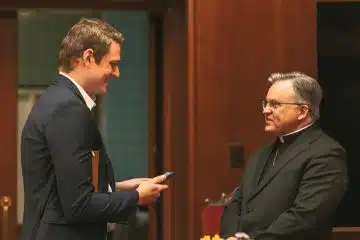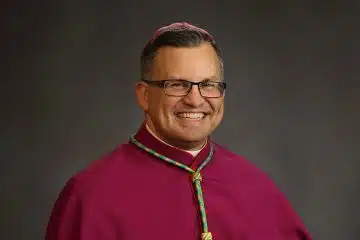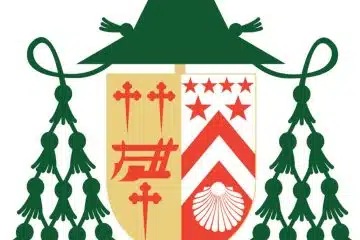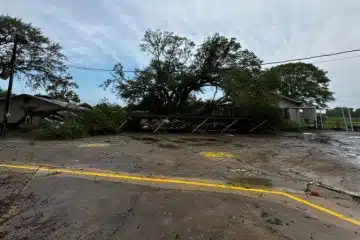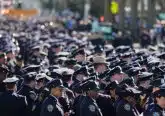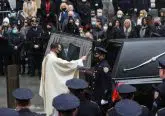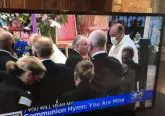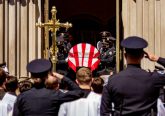Call a priest, I’m Catholic: Most police try to work with clergy in emergencies
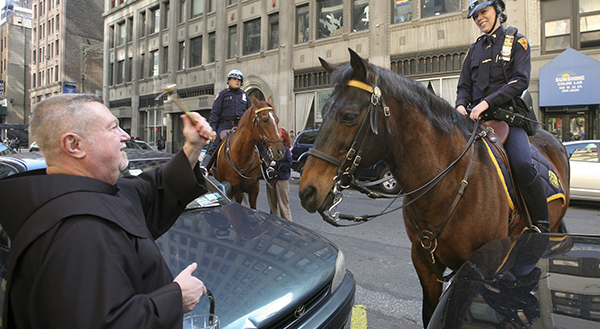
By John Stegeman
The Catholic Telegraph
In the moments after two bombs detonated at the Boston Marathon, priests from a nearby Catholic church gathered their sacramental oils and headed to the scene to anoint the injured. When they arrived, the Wall Street Journal reported last month, they were denied access to the scene and sent away.
The priests went on to set up shop in a local church, providing food and water to help those leaving the scene.
At least one of the dead in the explosions was a Catholic in 8-year-old Richard Martin.
In the wake of this event, a media affairs officer with the Boston Police Department told The Pilot that the priority of officers on the scene was to protect bystanders including the priests, to avoid contamination of a crime scene, and to follow an order given at the time to allow no more people into the area because of the potential of additional explosions.
The Catholic Telegraph reached out to the several police and sheriff departments in the Archdiocese of Cincinnati to ask how they would react to priest’s responding to emergency situations. While not all agencies responded, most that did said that their first priorities would be the same. Even with that in mind, most seemed sensitive to the spiritual needs of the citizens they serve.
While not citing a specific policy on admitting priests to accident scenes, Hamilton County Sheriff spokesman Jim Knapp said the department would make an effort to allow a priest to perform their role.
“Incidents like what happened in Boston are considered crime scenes, ‘roped off’ and no one other than investigators are permitted to enter,” he said. “But (the command staff) said that our officers are expected to use common sense, and have allowed clergy to enter crime scenes ‘carefully’ to do their work without disturbing evidence or contaminating the area.”
While the Boston situation makes it appear that priests and police can have an adversarial relationship, in the Archdiocese of Cincinnati the opposite seemed true. Most police and sheriff offices reached by The Catholic Telegraph work hand-in-hand with priests and other local faith leaders through chaplain programs, with police often reaching out to clergy for assistance in comforting victims or delivering bad news.
The Dayton police are in the second year of the PACT (Police and Clergy Working Together) program. PACT provides training for clergy for the situations they might encounter while working with police, and puts a minister, priest or other religious figure on call to respond to tragedies in certain areas.
![Marie Stacy[1] Marie Stacy[1]](http://www.thecatholictelegraph.com/wp-content/uploads/2013/05/Marie-Stacy1.jpg)
“We actually call our faith-based leaders out to critical situations,” Community Engagement Officer Christopher Pawelski said. “If something as unfortunate as Boston happened in Dayton, we’d probably call every PACT member that we have and see if they’d be able to come out and respond.”
Sheriff Jeff Grey of the archdiocese’s northwestern-most edge, Mercer County, said his department has a chaplain’s program as well, and indicated that his deputies would allow priests at accident scenes, provided they could be positively identified as priests.
“If we had a priest at an accident scene that wanted to come in and do Last Rites and such absolutely we would let them in,” Grey said. “We would just want to know that they’re a priest. For the most part in Mercer County its a small enough county so we know the priests, and it wouldn’t be a problem at all.”
At the far southeastern end of the archdiocese, Adams County Sheriff K.R. Rogers said his department welcomes the help religious communities can provide.
“We don’t really have a policy, but as long as (a priest) wasn’t interfering with any of the workings of the squad that would be fine,” Rogers said. “In no way would we shun a Catholic priest, protestant priest, Methodist priest or preacher. We invite all the help from the religious-based community we can get.”
Maintaining crime scenes like the Boston bombing are about more than just keeping a scene free of contamination, there is also a safety issue. The Boston Police, for example, didn’t know if there were more bombs or if the suspect was still in the area.
Father Earl Fernandez, Dean of the College of Mount St. Mary’s Seminary, said priest’s formation does include information on how to administer the sacraments in an emergency.
“Priests are going to take in their final training for ordination a course in the sacraments of healing, namely the Sacrament of Penance and Anointing of the Sick,” Fernandes said. “They get some training in how to administrate those sacraments and how to administrate those sacraments in emergency situations or in danger of death.”
One of the most famous images of September 11, 2001 is that of Father Mychael Judge’s body being carried out of the rubble. Father Judge was a first-responder who died when the South Tower collapsed. His death shows the reality of the risks all first responders face. Even with those risks, many priests still seek to respond.
Oblate Father John Wykes, director of a chapel near the Boston bombings, was among those denied access to help the injured.
“I said, ‘I have oil of the sick and I would like to see if I can help.’ One of them said, ‘What do you think Father? What do you think?’ Then he said, ‘Get back.’” Wykes said. “I certainly admire their work, but I look forward to working with them as an emergency responder if at all possible.”
The Catholic News Service contributed to this report.




